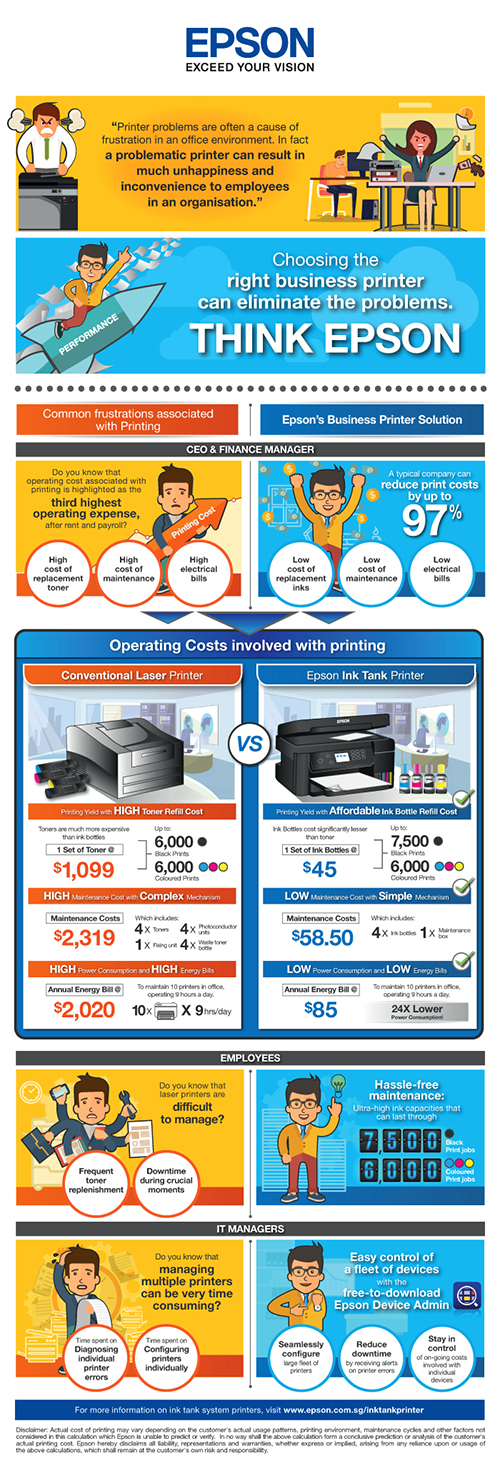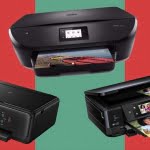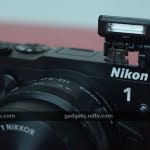
Email, collaboration platforms, cloud storage and applications – the current business landscape appears to be rapidly moving towards the idea of the paperless office. The reality however is very different, as completely eliminating paper may not be economical or practical for some businesses, such as law and auditing to name just a few.
According to research from Ray Morgan Company, print is still the third highest business operating expense behind rent and payroll. So what does this mean, especially for small-to-medium sized businesses (SMEs) that have limited resources and are under constant pressure to manage and further reduce operating costs?
Contents
A long-running competition
For a long time, laser printers have been the leading choice for office use because they are perceived to be faster and cheaper. Home users, on the other hand, have preferred inkjet for its superior quality output. Today, this is changing as businesses and enterprises are taking a serious look at inkjet as a better alternative to laser printers.
Without getting into the technicality of things, inkjet printers work on an elegantly simple mechanism. For example, Epson’s unique Micro Piezo and PrecisionCore print heads enable precise quantities of ink at exactly the right point on the paper. With the precise accuracy of ink droplets, image quality can achieve rich gradations and with almost no granulation.
Also read: Hong Kong-based logistics platform Gogovan raises US$250M to expand into new markets
Laser printers on the other hand, use high-temperature heating to fix toner onto the paper through a combination of processes such as charging, exposure, development, transfer and fixing. As a result, because of the multi-step printing process mechanism used in laser printers, not only is it necessary to replace the toner cartridges, but also the photoreceptor, developing unit, transfer unit and the fusing units. Moreover, because the replacement intervals for these components are different, maintenance needs to be performed frequently – all of which, translates into additional costs and lower productivity for businesses.
To illustrate, we put the Epson ink tank system printer in a side-by-side comparison with laser printers.

It is clear that Epson ink tank system printers are ahead in the office printer race. They are more economical, as they not only cost less from the outset, but they also produce more prints than laser printers at a significantly lower cost. In addition, they do all this without compromising on print quality and print speed.
A new breed of printers
As a pioneer brand Epson launched the ink tank system printers back in 2010. Today, Epson continues to expand its product line with a comprehensive range that supports up to A3+ printing to meet different business needs. Epson firmly believes that this will help improve business productivity.
The Epson L-series has been redesigned with the ink tank integrated into the printer, resulting in a more compact size to offer the smallest footprint amongst all brands of ink tank printers. The ink bottles are also designed to prevent re-filling errors with each ink bottle nozzle uniquely customised to fit only into its matching colour tank.
Also read: Indonesia’s motorcycle buying platform Moladin raises US$1.2M to grow regionally
To top it off, as the only brand in the ink tank system market offering automatic double-sided print function in several of its printers, Epson believes this will further lower the costs associated with printing.
But perhaps what is even more impressive about their new line of inkjet printers is the ink capacity and yield. The ink tank of the printer has a capacity of 60 cartridges worth of ink – that means 60 plastic cartridges worth of waste is eliminated every refill cycle – lowering both the financial and environmental costs attributed to the companies.
As of 2017, Epson’s L-series has already sold 20 million units across 150 countries, with a pronounced growth in emerging markets.
[“Source-e27”]










